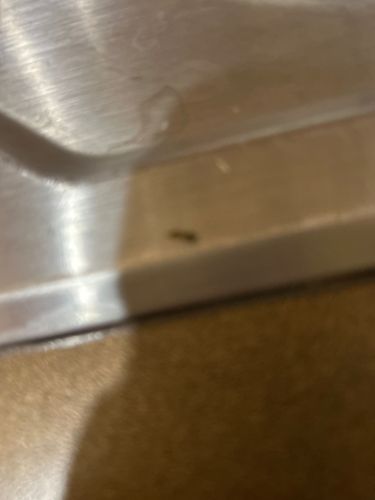Ant (likely Odorous House Ant or similar small ant species)
Scientific Name: Likely Tapinoma sessile (Odorous House Ant) or similar Formicidae species
Order & Family: Hymenoptera, Formicidae
Size: Typically 2.5-3.5 mm (0.1-0.14 inches) for workers

Natural Habitat
Widely distributed, found both indoors (especially kitchens, bathrooms, near food sources and moisture) and outdoors (under rocks, logs, leaf litter, in soil).
Diet & Feeding
Omnivorous; primarily feeds on sweet substances (honeydew, fruit juices, sweets), but also consumes grease, meats, and other household foods.
Behavior Patterns
Forms large colonies with multiple queens. Known for foraging in distinct trails, especially when food sources are found. When crushed, they emit a distinct odor often described as rotten coconut or blue cheese, which gives them their common name. They are adaptable and can establish nests in diverse locations.
Risks & Benefits
Potential risks: Nuisance pest, can contaminate food, and in large numbers, can be difficult to eradicate from homes. They do not sting or bite humans offensively. They are not known to transmit diseases. Benefits: Minimal specific benefits to humans directly, but ants in general play a role in soil aeration, seed dispersal, and as part of the food chain in ecosystems.
Identified on: 9/25/2025